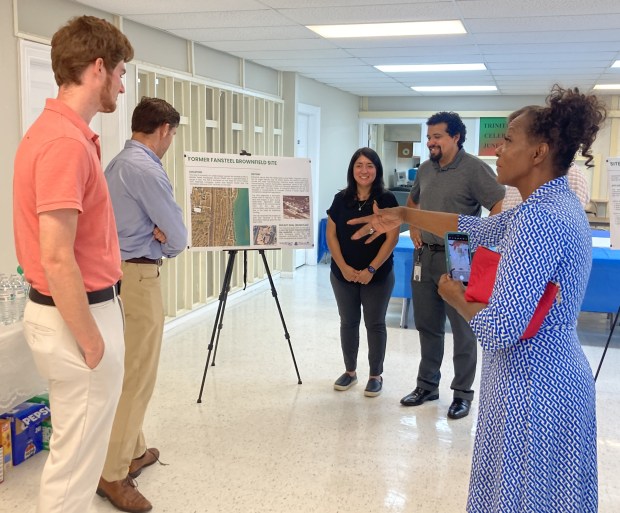Imagine a lakefront park in Waukegan, south of the harbor and the Amstutz Expressway, with homes across the street with a very short walk to the beach on land that once housed a factory that fabricated steel products.
Before any of that becomes a reality, 10,000 tons of contaminated dirt must be removed from the 11-acre site and it needs to be remediated so it is safe for residential and light-commercial development.
Plans are underway to decontaminate the former Fansteel brownfield site, and city officials are asking for comments from the public about their initial plans to rid the area of contaminants, prepare it for development and meet federal environmental requirements.
City officials will hold a public hearing on the Fansteel brownfield cleanup at 5 p.m. Monday at City Hall in Waukegan to present the plan to residents and hear what people have to say about the idea and future development.
Noelle Kischer-Lepper, the city’s director of planning and zoning, said the city has a $400,000 U.S. Environmental Protection Agency grant to remove the contaminants on the site and get it ready for development.
“We are using this money to clean up the contamination on this site,” she said. “The soil will go to a regular landfill.”
A matching grant, Kischer-Lepper said the city is required to invest $80,000 beyond the $400,000, but may spend more if necessary. The area is zoned for residential development, parks and open space under the city’s new Uniform Development Ordinance.
“It is primarily residential,” she said. “There could be some neighborhood businesses, like a small grocery, or a small store, or a coffee shop.”
Mike Trigg, a longtime Waukegan resident, said at an open house Tuesday introducing the project he liked the plans and the idea lakefront residential property could come to Waukegan.
“This is a great opportunity for someone to live close to the lake,” he said. “Right now, everything is above the bluff. A lot of work has gone into this analysis.”

Though he likes the plans he sees and the potential opportunity for development, Trigg said it is regrettable the cleanup must take place because Fansteel’s operation contaminated the soil.
“It’s unfortunate those who did it got away with it, and will not be held responsible,” he said.
Andrea Moore, who once lived in the area above the Fansteel site, said at the open house she wants the housing to be affordable for people who already live in the south side Waukegan neighborhood.
“I don’t want to see the stigma of gentrification here,” she said. “The cost of this housing should not be beyond the reach of the people who live here.”
Cullen Brown, the project manager and a consultant to the city for this project, said the factory closed in 1987 and testing of the soil and groundwater started in 2005 and continued through 2008.
“High levels of contaminants were found in the soil,” Brown said. “We stockpiled all the contaminated soil in the northwest corner of the site. It is 10,000 tons. We’re bringing in three feet of topsoil to cover the entire site. It’s like a cap over the top. Then we prepare it for development.”
The public comment period ends July 31.



